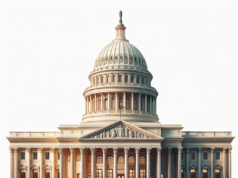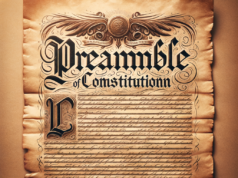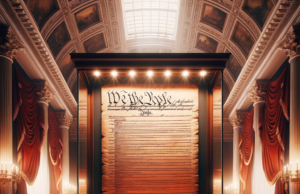Contents
- 1 Understanding the Historical Context of Gun Control in the United States
- 2 The Second Amendment: Interpretations and Implications for Gun Legislation
- 3 Key Statistics: Analyzing Gun Violence Trends Across America
- 4 The Role of Advocacy Groups in Shaping Gun Control Policies
- 5 Public Opinion: How Americans View Gun Rights and Regulations
- 6 Potential Solutions: Bridging the Divide on Firearm Legislation in America
The debate over gun control in the United States is one of the most contentious issues facing the nation today. With a history steeped in the right to bear arms, the discussion often becomes polarized, pitting advocates for stricter regulations against those who champion the Second Amendment. As gun violence continues to plague communities across the country, understanding the historical context, legal interpretations, and public sentiment surrounding firearms is crucial for navigating this complex landscape. This article aims to unravel America’s deadly divide on firearms by examining these key aspects.
Understanding the Historical Context of Gun Control in the United States
The roots of gun control in the United States can be traced back to the colonial era, where firearms were essential for hunting and self-defense. However, as the nation evolved, so did the perception of guns and their regulation. The Gun Control Act of 1968 marked a significant turning point, establishing federal regulations on firearm sales and ownership in response to rising crime rates and high-profile assassinations. Over the decades, various legislative measures have been enacted, including the Brady Handgun Violence Prevention Act and the Assault Weapons Ban, reflecting a growing concern over gun violence. Yet, these measures have often faced legal challenges and public backlash, highlighting the ongoing struggle to find a balance between individual rights and public safety.
The Second Amendment: Interpretations and Implications for Gun Legislation
The Second Amendment of the U.S. Constitution, which states, “the right of the people to keep and bear Arms, shall not be infringed,” serves as the cornerstone of the gun rights debate. Interpretations of this amendment vary widely, with some arguing that it guarantees an individual’s right to own firearms for personal use, while others contend that it pertains to the collective right of states to maintain militias. Landmark Supreme Court cases, such as District of Columbia v. Heller (2008) and McDonald v. City of Chicago (2010), have affirmed the individual right to bear arms, complicating the legislative landscape for gun control advocates. These rulings have set a precedent that limits the scope of potential regulations, making it increasingly challenging to implement comprehensive gun control measures.
Key Statistics: Analyzing Gun Violence Trends Across America
Gun violence remains a pressing issue in the United States, with statistics revealing alarming trends. According to the Gun Violence Archive, there were over 44,000 gun-related deaths in 2022, including homicides, suicides, and accidental shootings. The Centers for Disease Control and Prevention (CDC) reports that firearms are now the leading cause of death for children and adolescents in the country. Additionally, mass shootings have become more frequent, with high-profile incidents capturing national attention and igniting calls for reform. These statistics underscore the urgent need for effective policies to address the root causes of gun violence, as well as the challenges faced by lawmakers in enacting meaningful change.
The Role of Advocacy Groups in Shaping Gun Control Policies
Advocacy groups play a pivotal role in shaping the discourse around gun control in the United States. Organizations such as the National Rifle Association (NRA) and Everytown for Gun Safety represent opposing sides of the debate, mobilizing resources and public support to influence legislation. The NRA has historically championed gun rights, lobbying against restrictive laws and promoting a culture of firearm ownership. Conversely, Everytown and similar organizations advocate for stricter regulations, focusing on issues such as background checks, red flag laws, and assault weapon bans. These groups not only engage in political lobbying but also work to educate the public, raise awareness, and drive grassroots movements, making them key players in the ongoing struggle over gun control policies.
Public Opinion: How Americans View Gun Rights and Regulations
Public opinion on gun rights and regulations is complex and often divided along partisan lines. Recent surveys indicate that a majority of Americans support measures such as universal background checks and restrictions on high-capacity magazines. However, the issue remains contentious, with significant portions of the population firmly opposing any form of gun control, citing concerns over personal freedom and self-defense. According to a Gallup poll conducted in 2023, approximately 57% of respondents favored stricter gun laws, while 38% were opposed. This dichotomy reflects the broader societal divide, as cultural, regional, and political factors influence individuals’ views on firearms and the regulations surrounding them.
Potential Solutions: Bridging the Divide on Firearm Legislation in America
Finding common ground in the gun control debate requires a multifaceted approach that addresses the concerns of both sides. Potential solutions may include implementing comprehensive background checks, promoting safe storage practices, and investing in mental health resources to prevent gun violence. Additionally, fostering dialogue between gun rights advocates and gun control supporters can help bridge the divide, encouraging collaboration on policies that prioritize public safety while respecting individual rights. Education and awareness campaigns can also play a crucial role in changing perceptions and reducing stigma surrounding responsible gun ownership. Ultimately, a balanced approach that considers the complexities of gun violence and the diverse perspectives of Americans is essential for creating effective and sustainable firearm legislation.
The gun control debate in the United States is emblematic of a broader struggle over individual rights, public safety, and cultural identity. As gun violence continues to impact communities nationwide, it is imperative that lawmakers, advocacy groups, and the public engage in constructive dialogue to address this pressing issue. By understanding the historical context, legal interpretations, and public sentiment surrounding firearms, America can work towards a more informed and unified approach to gun control that respects both the Second Amendment and the need for safety in society.

























